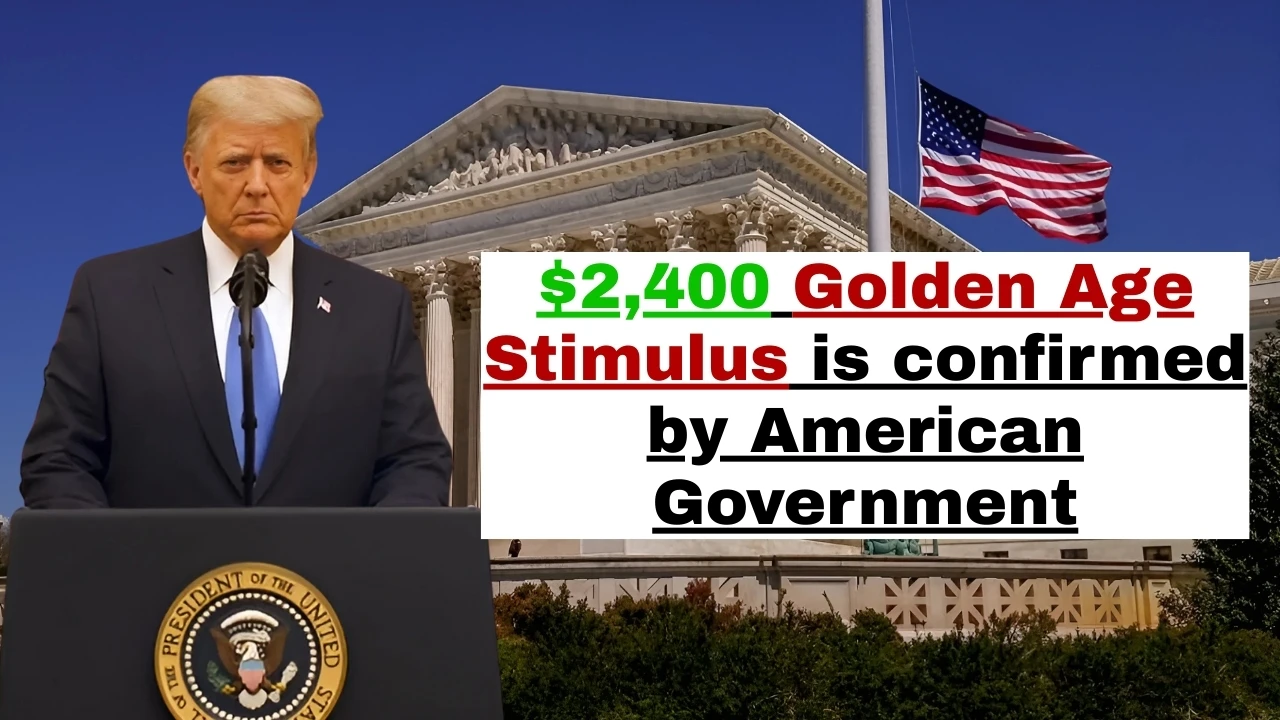Golden Age Stimulus : In recent months, rumors have been circulating about a new “$2,400 Golden Age Stimulus” supposedly confirmed by the American government. This article aims to provide a comprehensive overview of these claims, examine their validity, and offer accurate information about current financial assistance programs in the United States.
The Truth About the “$2,400 Golden Age Stimulus”
Despite widespread speculation, it’s crucial to understand that there is currently no official confirmation of a “$2,400 Golden Age Stimulus” from the American government. This claim appears to be a misinterpretation or misrepresentation of existing benefit programs and potential policy discussions.
Key Facts:
No New Stimulus Program: The Internal Revenue Service (IRS) and Social Security Administration (SSA) have not announced any new stimulus check program for 2025.
Existing Benefit Increases: While there’s no new stimulus, there have been adjustments to existing benefit programs that may have contributed to the confusion.
Misinformation Spread: The idea of a “$2,400 Golden Age Stimulus” seems to have originated from unofficial sources and spread through social media and unreliable news outlets.
Golden Age Stimulus Current Financial Assistance Programs
While the specific “$2,400 Golden Age Stimulus” is not real, there are several legitimate financial assistance programs and benefit increases that Americans should be aware of:
1. Social Security and SSI Payment Increases
The Social Security Administration has implemented a cost-of-living adjustment (COLA) for 2025, which has resulted in increased payments for beneficiaries. However, this is not a new stimulus program but rather an annual adjustment to keep pace with inflation.
2. Retroactive Payments Under the Social Security Fairness Act
Some beneficiaries may be eligible for retroactive payments due to changes in Social Security regulations. These payments are not new stimulus checks but adjustments based on past entitlements.
3. Tax Credits for Low-Income Workers
Various tax credits, such as the Earned Income Tax Credit (EITC), continue to provide financial support for eligible low-income workers. These are ongoing programs, not new stimulus initiatives.
Golden Age Stimulus Understanding Recent IRS Payments
It’s important to note that the IRS has been issuing payments to certain individuals, which may have contributed to the confusion about new stimulus checks:
In late 2024, the IRS began automatically sending payments of up to $1,400 per person to approximately one million eligible individuals who did not claim the Recovery Rebate Credit on their 2021 tax returns.
These payments, totaling about $2.4 billion, are not new stimulus checks but rather unclaimed credits from the previous pandemic-era stimulus programs.
Eligibility for these payments is based on 2021 qualifications under the American Rescue Plan, which provided $1,400 per person to individuals earning under $75,000 (single) or $150,000 (joint filers).
State-Level Financial Assistance
While federal stimulus checks are not currently being issued, some states have implemented their own financial assistance programs:
California: The state has offered various rounds of Golden State Stimulus payments to eligible residents.
Colorado: The state issued TABOR (Taxpayer’s Bill of Rights) refunds to eligible taxpayers.
Florida: A property tax rebate program was implemented for certain homeowners.
Georgia: Tax rebates of up to $500 were offered to eligible residents, with potential for additional rebates in 2025.
Massachusetts: The state provided tax refunds under Chapter 62F.
These state-level programs vary in eligibility criteria, payment amounts, and distribution timelines. Residents should check with their state’s official websites for the most up-to-date information.
Golden Age Stimulus The Reality of Future Federal Stimulus
As of 2025, there are no concrete plans for additional federal stimulus checks. The focus of the federal government has shifted from broad stimulus measures to targeted economic policies and existing social programs. However, policy discussions continue, and future economic conditions may influence decisions on financial assistance programs.
Protecting Yourself from Misinformation
Given the prevalence of misinformation regarding stimulus checks and government benefits, it’s crucial to:
Verify Information: Always cross-check claims about new government programs with official sources such as IRS.gov or SSA.gov.
Be Wary of Scams: Be cautious of any requests for personal information or payments related to alleged stimulus programs.
Stay Informed: Regularly check reputable news sources and government websites for accurate updates on financial assistance programs.
Golden Age Stimulus Legitimate Financial Assistance Options
While the “$2,400 Golden Age Stimulus” is not real, there are legitimate ways to seek financial assistance:
Social Security Benefits: If you’re of retirement age or disabled, you may be eligible for Social Security benefits.
Supplemental Security Income (SSI): This program provides support for aged, blind, and disabled people with little or no income.
SNAP Benefits: The Supplemental Nutrition Assistance Program offers nutrition assistance to eligible low-income individuals and families.
Unemployment Insurance: If you’ve lost your job, you may qualify for unemployment benefits through your state.
Local Assistance Programs: Many cities and counties offer various forms of financial assistance. Check with your local government offices for available programs.
Golden Age Stimulus Conclusion
While the idea of a “$2,400 Golden Age Stimulus” may be appealing, it’s important to rely on factual information from official sources. Currently, there is no such program confirmed by the American government.
However, various legitimate financial assistance programs continue to operate at both the federal and state levels.
As economic conditions evolve, it’s crucial to stay informed about actual government policies and programs. Always verify information with official sources and be cautious of claims that seem too good to be true.
By understanding the reality of available assistance programs, individuals can make informed decisions about their financial well-being and access the support they truly qualify for.
Remember, while broad stimulus programs may not be on the horizon, the government continues to provide various forms of targeted assistance to those in need. If you’re facing financial difficulties, explore the legitimate options available through official channels and local support programs.
Also Read This-
Youth Allowance increase by $19.90, Check how to claim ?
How to claim Maximum $5108 Social Security Benefits, Check process
Top 9 rare dimes are equal to $300 Million, check if you have one
